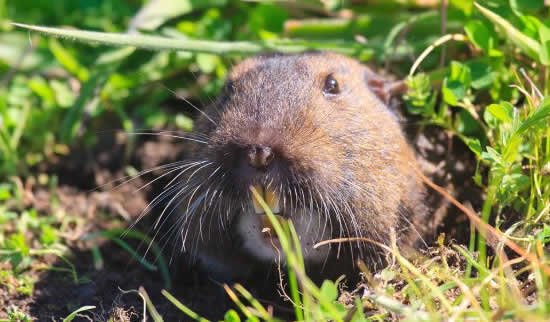Stop Gophers in Their Tracks: Comprehensive Control Approaches
Ultimate Insect Control Solutions for Taking On Persistent Gopher Problem Issues
In the realm of bug control, gophers offer an unique difficulty due to their relentless nature and harmful routines. Property owners and garden enthusiasts often locate themselves secured a fight of wits with these below ground pests, seeking effective solutions to reclaim their outdoor areas. While the mission for gopher control might seem daunting, there exist targeted strategies and devices that can turn the trend for those looking for respite from these burrowing annoyances. By exploring an extensive approach that includes understanding gopher actions, utilizing specialized trapping techniques, taking advantage of repellents, and adopting long-term avoidance strategies, a path in the direction of reliable gopher administration arises. The journey towards achieving comfort when faced with gopher invasions starts with a deliberate and enlightened method.
Understanding Gopher Actions Patterns
Evaluating gopher actions patterns gives valuable insights right into their choices and behaviors, aiding in the advancement of effective pest control methods. Understanding exactly how gophers act is important in designing effective parasite monitoring strategies.
Gophers are delving rodents understood for their considerable tunneling activities. gopher lawn damage. By observing their actions, researchers have actually uncovered that gophers are territorial animals, with each gopher usually occupying its own passage system. These passage systems serve various purposes, consisting of nesting, food storage, and defense from predators
Moreover, gophers display particular feeding patterns, favoring roots, roots, and various other underground plant components. By comprehending their dietary preferences, bug control experts can purposefully bait catches or execute repellents that target these food resources, properly lowering gopher populaces.
Furthermore, gophers are most active throughout certain times of the day, normally early morning and late afternoon. This knowledge can aid in organizing bug control tasks for optimum performance. On the whole, an extensive understanding of gopher behavior patterns is essential for carrying out targeted and efficient parasite control measures.
Effective Catching Strategies
When dealing with gophers, catches are a humane and efficient technique for control. One of the most commonly made use of traps is the box trap, which captures gophers alive so they can be released somewhere else. It's essential to examine traps often to guarantee trapped gophers do not experience and to eliminate captured gophers quickly.
Using Deterrents and repellents
To match the efficiency of trapping methods in handling gopher infestations, building owners can check out the usage of repellents and deterrents as added tools in their pest control collection. Deterrents, on the other hand, objective to make the setting much less eye-catching to gophers by using vibrations or seem to imitate predators or produce disturbances that make the area unwelcoming for gophers. When integrating repellents and deterrents right into a parasite control approach, it is necessary to comply with application directions meticulously and frequently reapply the products to maintain their efficiency in hindering gophers from creating damage to properties.
Implementing Natural Control Techniques

One more natural control technique includes the usage of catches. Gopher traps can be positioned strategically in active passages to capture and eliminate the parasites. These traps are a humane way to regulate gopher populations without turning to poison or dangerous chemicals. Furthermore, installing underground barriers made of cord mesh or hardware cloth can help avoid gophers from entering specific locations like gardens or grass. These obstacles interrupt their tunneling tasks and dissuade them from triggering more damage. By integrating these natural control techniques, it is possible to successfully take care of relentless gopher invasions in an eco-friendly way.
Integrating Long-Term Prevention Strategies
To establish lasting control over gopher invasions, it is crucial to include aggressive actions that focus on protecting against future occurrences. Implementing long-term avoidance approaches can substantially reduce the possibility of gopher re-infestations.
An additional important aspect of long-term prevention is preserving a clean yard or backyard. Gophers are brought in to areas with abundant food sources like plants, origins, and light bulbs. By keeping vegetation well-trimmed and eliminating excess debris, you can make your residential property less appealing to gophers. Additionally, practicing correct waste monitoring by getting rid of natural materials without delay can assist deter these insects from settling on your land. By integrating these proactive procedures right into your pest control technique, you can create a hostile setting for gophers, ultimately reducing the possibility of future problems.

Conclusion
In verdict, dealing with gopher invasions needs a detailed strategy that combines capturing techniques, repellents, all-natural control techniques, and long-lasting prevention strategies. By understanding gopher actions patterns and using a combination of these options, home owners can efficiently take care of relentless invasions and stop future incidents. It is very important to regularly keep track of and preserve these pest control actions to guarantee a gopher-free atmosphere.
By exploring an extensive approach that encompasses understanding gopher behavior, utilizing specialized capturing approaches, using repellents, and taking on long-lasting avoidance techniques, a course in the direction of reliable gopher management emerges. By observing their habits, researchers have actually discovered that gophers are territorial animals, with each gopher typically inhabiting its own tunnel system. It's important to inspect catches regularly to ensure trapped gophers do not suffer and to remove recorded gophers promptly. Deterrents, on the other hand, objective to make the atmosphere much less attractive to gophers by utilizing resonances or sound to replicate killers or produce disruptions that make the area inhospitable for gophers. Furthermore, planting particular greenery that gophers disapproval, such as castor bean plants or gopher spurge, can act as a deterrent.